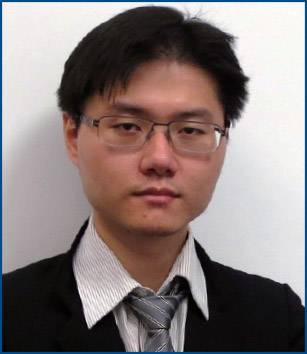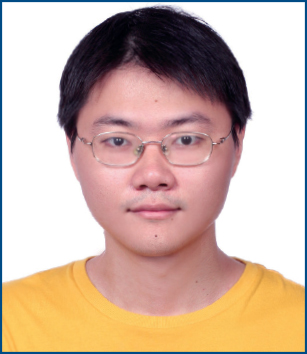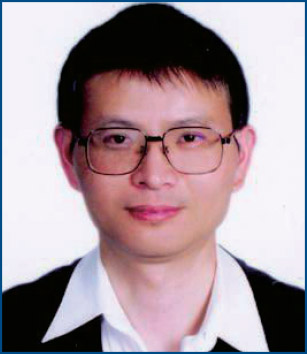November 2, 2024
AMD Unveils Locations for Research and Development Centers in Taiwan In a vote of confidence in Taiwan’s role as a tech ecosystem, Advanced Micro Devices Inc. (AMD) has chosen to locate its new R & D centers in Tainan and Kaohsiung. The new facilities are part of a NT 8.64 billion dollar project to advance its development of cutting-edge technologies such as artificial intelligence (AI) and silicon photonics. AMD is the latest in a series of global semiconductor companies seeking to build their R & D centers in Taiwan under the Ministry of Economic Affairs’ A+ global R & D and innovation partnership program. The US chip company was granted a subsidy of NT 3.31 billion dollars in July, which accounts for about 38% of the company’s costs for this investment. AMD’s decision came as Taiwan has formed an extensive supply chain to provide components for the world’s AI devices, from AI chips made by TSMC to AI servers assembled by Hon Hai Precision Industry Co. and Wiwynn Corp., amongst others. AI chip giant Nvidia Corp. has set up its first AI R & D center in Taipei’s Neihu District and is scouting sites for a second, likely in Kaohsiung. Semiconductor equipment makers ASML Holding NV, Lam Research Corp. and Applied Materials Inc. previously also received grants to set up local R & D sites through the same program. Another developing trend is that, in order to expand the local tech talent, Kaohsiung has been working with the nation’s prestigious schools. At the beginning of this year, National Tsing Hua University signed a memorandum of understanding with the Kaohsiung... September 2, 2024
The Taiwan Intellectual Property Office Proposes Draft Amendments to the Patent Examination Guidelines The Taiwan Intellectual Property Office (TIPO) has recently proposed draft amendments in specific areas such as patent term extension calculations and who qualifies as an interested party in a patent invalidation. The main points are as follows: For patents relating to pharmaceutical inventions, if a regulatory approval shall be obtained in accordance with the Pharmaceutical Affairs Act or the Rare Disease and Orphan Drug Act for the exploitation of the patent, the patentee may apply for a patent term extension for the period in which the inventions cannot be exploited due to the absence of a regulatory approval. According to the Patent Examination Guidelines, the period from the day after the date of receiving the Notice for Collecting the Approval to the day of actually collecting the approval should be deducted from the term to be extended. Therefore, the patentee should submit a document of proof regarding the date of receiving the Notice for Collecting the Approval. Concerning the topic of an interested party in a patent invalidation, an interested party is now specified as a legally interested party, i.e. a party whose rights or legal benefits are directly impaired due to any controversy surrounding the patent right or the right to apply for a patent. If the invalidation petitioner provides a document of proof to establish such interest, as long as the patentee does not argue against it and the examiner does not foresee any problems, it is unnecessary to investigate the existence of such interest. However, if the patentee doubts the existence of the... July 18, 2024
Taiwan Revises Rules for Hearings on Patent Invalidation Cases The Taiwan Intellectual Property Office has introduced new “Guidelines for Hearings on Patent Invalidation Cases” in order to improve the quality of the hearing process. Some of the most significant revisions are as follows: More regulations have been added to the pre-hearing preparation stage. As well as the existing rules governing conducting the hearing and admissibility of documents and evidence, the amendment now adds regulations pertaining to organization and simplification of the disputed issues, clarifies the post-grant amendments of disputed patents, and specifies procedures for agreement on key points of defense and offense during the hearing process. Besides being responsible for examining the patent invalidation case, the presiding officer for the hearing will now be allowed to share thoughts on factual, legal and evidential disputes in order to render the process more transparent. Hearings can now be conducted via video conferencing, enabling participants to join from office or home. This will also make it easier for international participants to join which is the common global trend. In the case when a party is absent from the proceedings, the examiner will still be able to hold a “one-party hearing”. However, the hearing should be rescheduled if the absent party did not receive proper notification of the hearing, or the attending party cannot provide necessary evidence for matters to be investigated by the examiner, or the matter presented by the attending party was not provided to the other party within a reasonable length of time. The summary of the hearing shall be recorded and supplemented with audio or video recordings to simplify... June 27, 2024
Manufacturing Firms in Taiwan Increase R & D Spending The Ministry of Economic Affairs released data for 2023 showing listed manufacturing companies accelerated their research and development spending to a record high of NT 692.7 billion dollars in the face of a dip in sales and profits. The spending was up 2.9% from 2022, driven mainly by expenditures by those in the electronic parts, computer products and optical components industries. Companies in the electronic components sector spent NT 450.7 billion dollars on R & D last year, up 2.2% and accounted for 65.1% of overall spending, while those in the computer products and optical components sector spent NT 158 billion dollars, up 4% and contributing 22.8% of the total. In terms of individual companies, global foundry giant Taiwan Semiconductor Manufacturing Co. (TSMC) headed the list with R & D spending of NT 178.7 billion dollars, up 11.1% from 2022 and accounted for 25.8% of the total. Smartphone chip designer MediaTek Inc. came in second with spending of NT 80.6 billion dollars and networking chip designer Realtek Semiconductor Corp. was in third place at NT 20.1 billion dollars. Despite the inclement economic weather, firms in Taiwan have still been developing technologies to maintain their leading edge in the market. Summary of Operating Procedures for Accelerated Examination of Trademark Applications in Taiwan The Trademark Act was amended last year to cater to those who needed an accelerated examination of their trademark application. The amendment came into effect on May 1, 2024. To help applicants prepare for the accelerated examination, the Operating Procedures for Accelerated Examination of Trademark Applications were announced on... May 27, 2024
Taiwan Issues Report on Patent Trends for Semiconductor Industry Waste Management The Taiwan Intellectual Property Office (TIPO) recently issued a report titled Analysis of Patent Trends of Key Technologies for Waste Treatment in the Semiconductor Industry. The document looked at patent applications related to waste treatment of copper, silica mud and hydrogen in the semiconductor industry. Regarding applications related to copper recycling, the patent offices of the US, Japan, Europe, China and Korea ranked as the top five patent offices in terms of the number of patent applications and accounted for approximately 70% of patent applications in this field worldwide. Looking at the data regionally, applicants from various Asian countries accounted for 62% of the worldwide total, but European, American and Australian applicants also filed a significant number of patent applications reflecting their long histories of large mining companies and their continued development of their technological level such as in the fields of pyrometallurgy, hydrometallurgy, microbial metallurgy and other processing means. Regarding applications related to silica mud recycling, the abovementioned five major patent offices plus TIPO accounted for 93% of patent applications in this field worldwide. Regionally, applicants from Asian countries filed the majority of patent applications totaling 86.5% worldwide. By contrast, Europe and American applicants only came to 7.2% worldwide, reflecting that Asian applicants had more initiative to develop technologies related to the various types of solid liquid separation such as filtration, centrifugation, flotation, fusion, vaporization, magnetic separation, gravity separation, hydrocyclone, electrostatic separation and vacuum microwave drying. Regarding applications related to hydrogen recovery, except for the Korean office, the other four major ranked offices were the biggest source... By Firm
Key Person Profile
Upcoming Events
Recent Past Events



 Deep & Far Attorneys-at-law
Deep & Far Attorneys-at-law Yu-Li Tsai
Yu-Li Tsai Lu-Fa Tsai
Lu-Fa Tsai C. F. Tsai
C. F. Tsai







